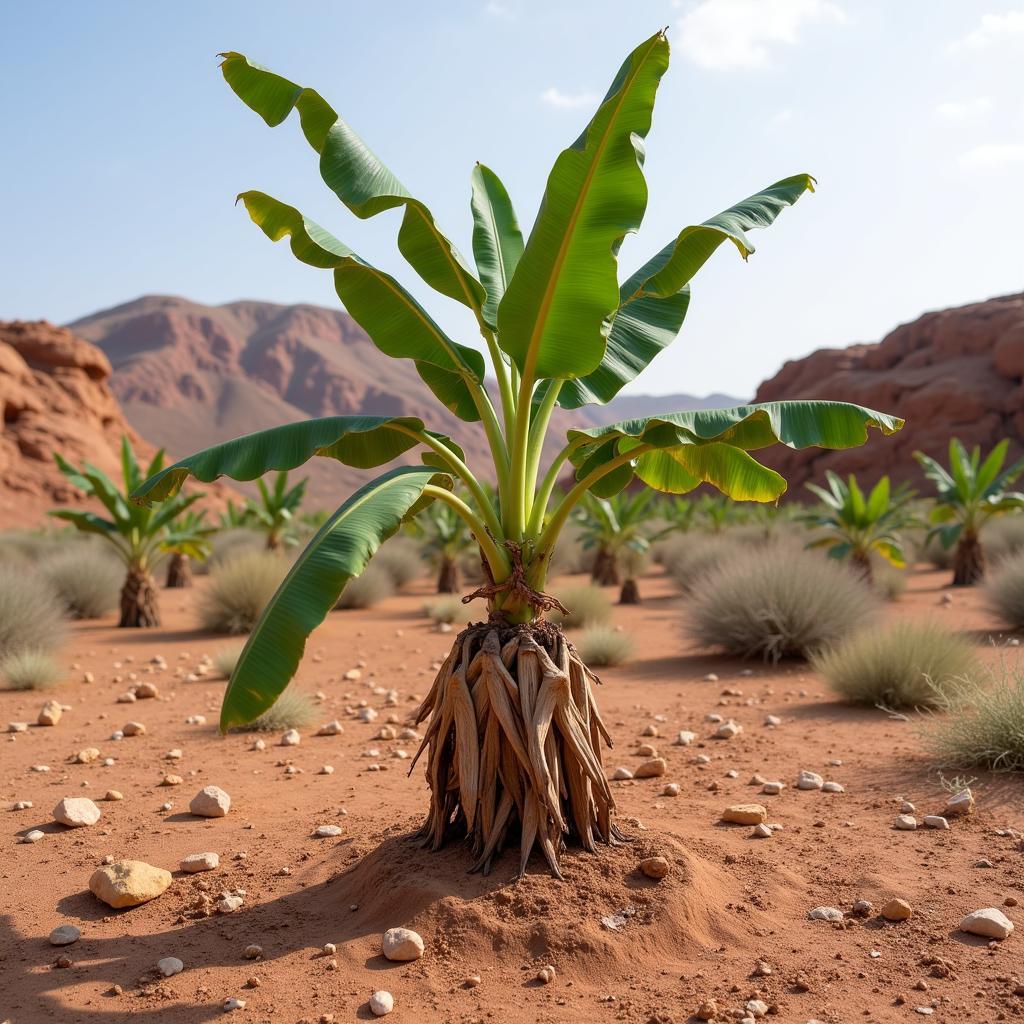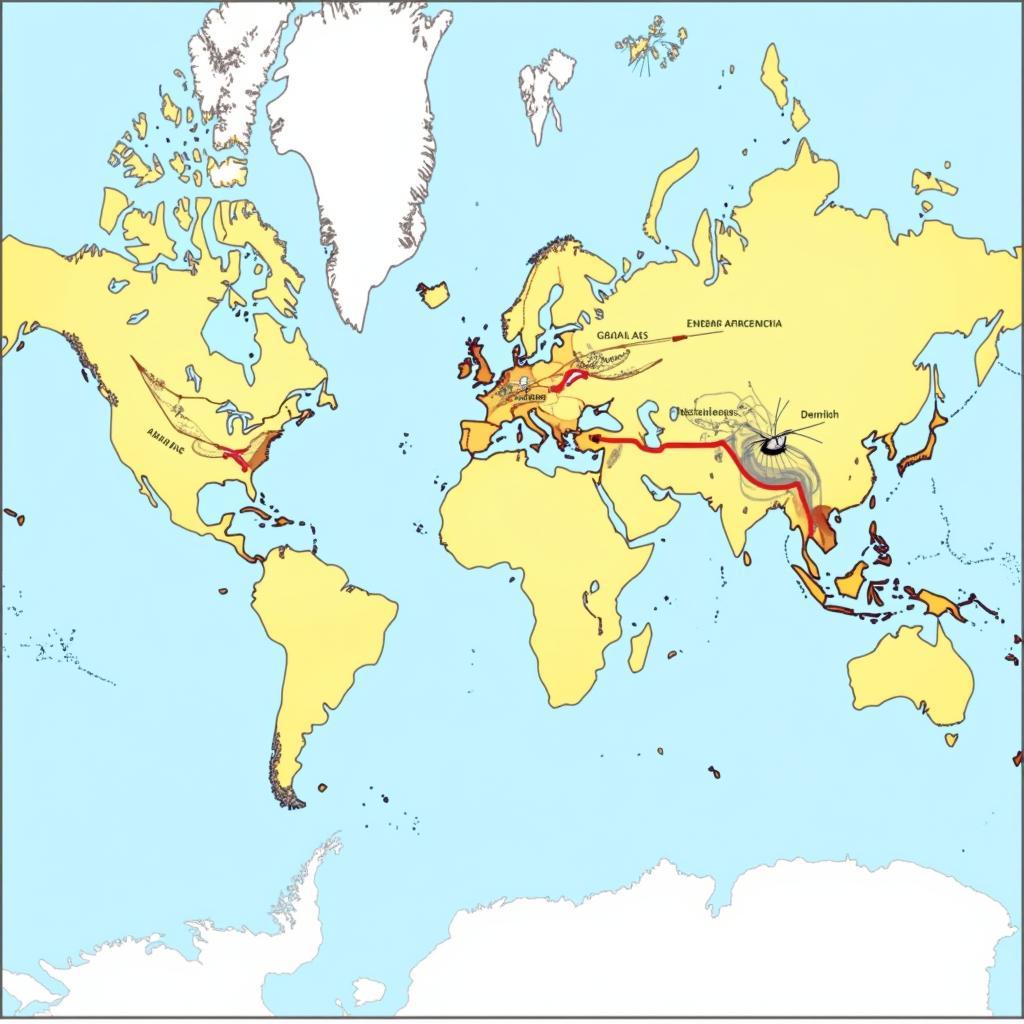Unveiling the African Desert Banana: A Remarkable Fruit
The African Desert Banana, also known as Ensete ventricosum, is a fascinating plant with a rich history and diverse uses across the African continent. It’s not your typical sweet banana found in supermarkets, but a unique food source with significant cultural and economic importance. Let’s delve into the fascinating world of this unusual fruit.
The African desert banana isn’t just a source of food; it’s woven into the cultural fabric of many communities. From its role in traditional ceremonies to its medicinal applications, this plant holds a special place in the lives of those who cultivate it. Learn more about the unique properties and benefits of this incredible plant.
Exploring the African Desert Banana’s Unique Properties
Unlike the common banana, the African desert banana isn’t primarily grown for its fruit. The pseudostem and corm are the main edible parts, rich in starch and providing a vital carbohydrate source in regions where other crops struggle to thrive. It’s remarkably drought-resistant, making it a reliable food source in arid and semi-arid regions of Africa. Check out this list of other amazing African fruits list.
The versatility of the African desert banana extends beyond its nutritional value. The fibers are used in crafting ropes, mats, and other essential household items, showcasing the resourcefulness of the communities that depend on it. Its large leaves are also used as wrapping material for food and other goods. This plant embodies sustainable living.
 African Desert Banana Plant in Ethiopian Landscape
African Desert Banana Plant in Ethiopian Landscape
Cultivating and Harvesting the African Desert Banana
The cultivation of the African desert banana is a labor of love, often passed down through generations. Propagation is primarily through suckers, ensuring the continuation of this valuable resource. The plant requires minimal care once established, further enhancing its appeal in challenging environments. Find out more about the resilience of African soil.
Harvesting the African desert banana is a carefully timed process. The pseudostem and corm are harvested before the plant flowers, ensuring maximum starch content. The extracted pulp is then processed into various food products, including a starchy porridge known as kocho in Ethiopia.
African Desert Banana: A Source of Sustenance and Cultural Significance
“The African desert banana is more than just a crop; it’s a symbol of resilience and resourcefulness,” says Dr. Anika Nkosi, an ethnobotanist specializing in African food systems. “It’s a testament to the ingenuity of communities who have learned to thrive in challenging environments.”
From Food to Fiber: The Multifaceted Uses of Ensete Ventricosum
The African desert banana has found its way into various traditional practices, including ceremonies and rituals. Its leaves are used in some cultures for wrapping food during special occasions, while the fibers are incorporated into traditional attire. Explore the beauty of African knit wear.
“The plant’s versatility is truly remarkable,” adds Dr. Kwame Asante, an agricultural scientist focused on sustainable farming in Africa. “From food security to traditional crafts, the African desert banana plays a vital role in the lives of many.”
The Future of the African Desert Banana
The African desert banana holds immense potential for food security in a changing climate. Its drought resistance and nutritional value make it an ideal crop for arid and semi-arid regions. Research is ongoing to improve cultivation techniques and explore new applications for this remarkable plant. Even the African desert banana flower has unique applications.
Conclusion
The African desert banana, Ensete ventricosum, is more than just a plant; it’s a lifeline for many communities across Africa. From its role as a vital food source to its use in traditional crafts and ceremonies, this unique plant embodies the resilience and ingenuity of the African people. Further research and development of sustainable cultivation practices will undoubtedly unlock even greater potential for this remarkable resource in the future.
FAQ
-
What are the edible parts of the African desert banana?
- Primarily the pseudostem and corm.
-
How is the African desert banana propagated?
- Mainly through suckers.
-
What is kocho?
- A starchy porridge made from the African desert banana.
-
Is the African desert banana drought-resistant?
- Yes, highly so.
-
What are some non-food uses of the African desert banana?
- Fiber extraction for ropes, mats, and traditional crafts.
-
Where is the African desert banana primarily cultivated?
- Arid and semi-arid regions of Africa.
-
What is the scientific name for the African desert banana?
- Ensete ventricosum.
For further inquiries about the African desert banana and other related topics, feel free to browse other articles on our website. We encourage you to explore the diverse and fascinating world of African culture and life.
Need assistance? Contact us 24/7: Phone: +255768904061, Email: [email protected] or visit us at Mbarali DC Mawindi, Kangaga, Tanzania. We’re here to help!

